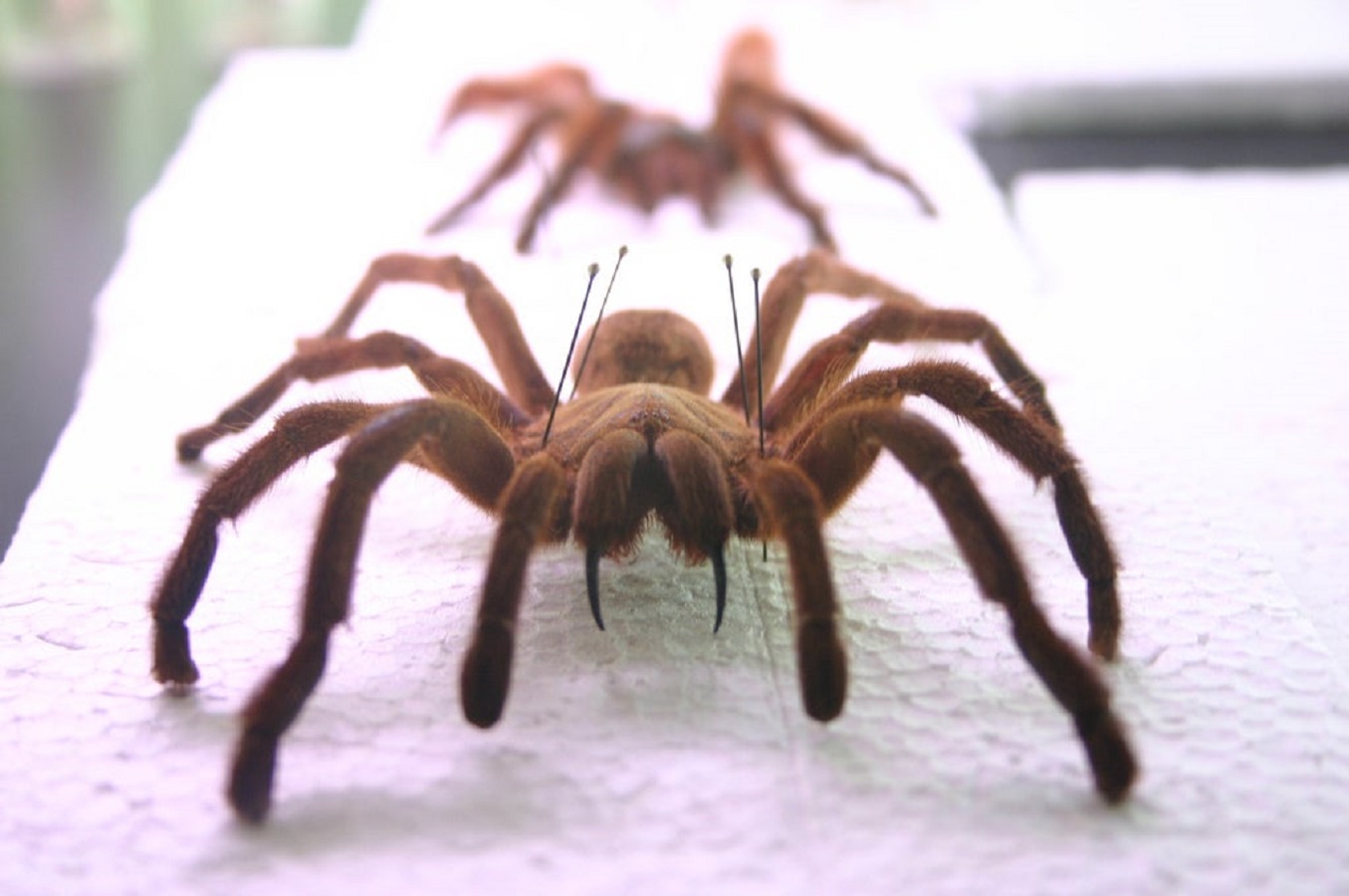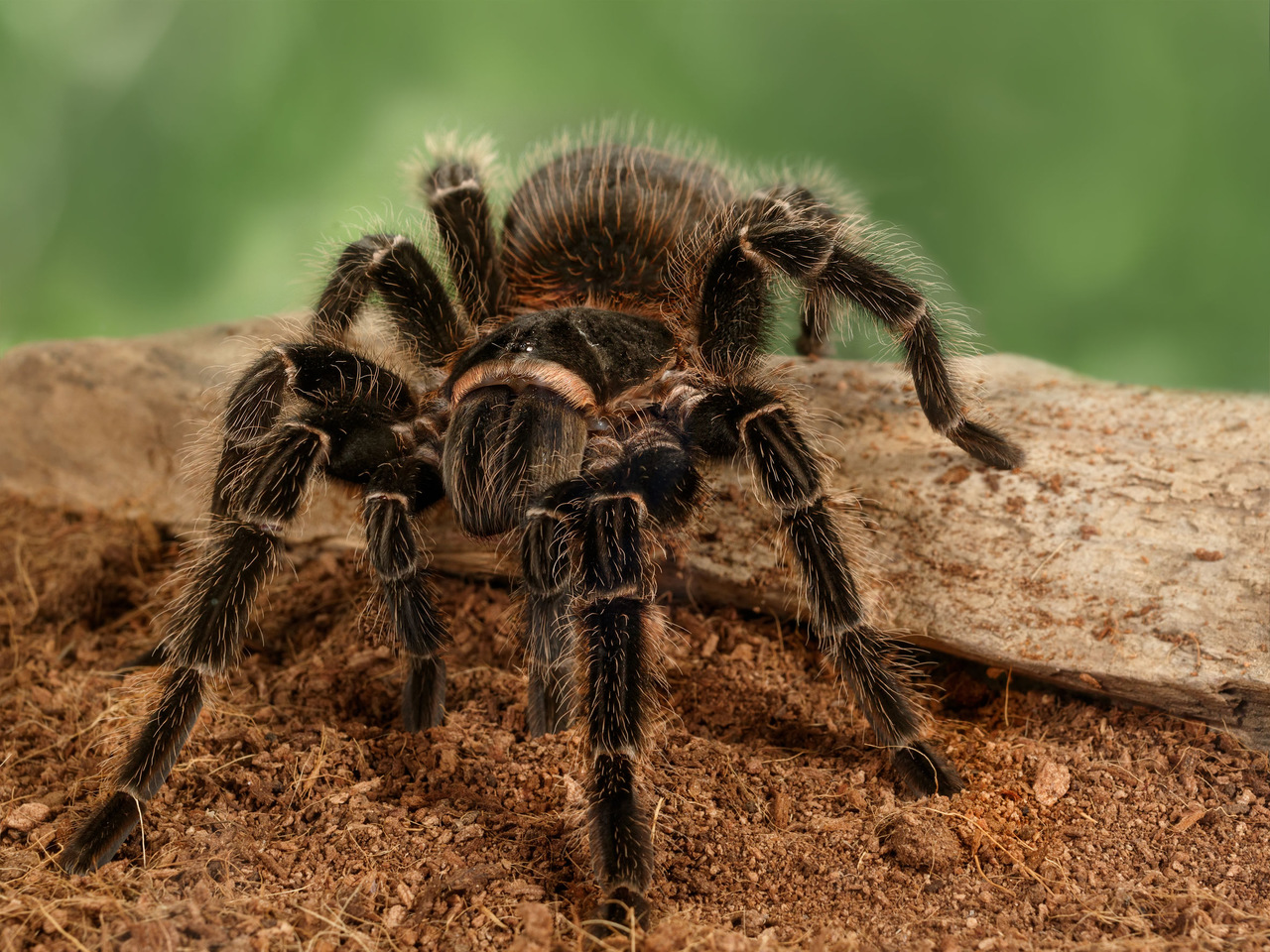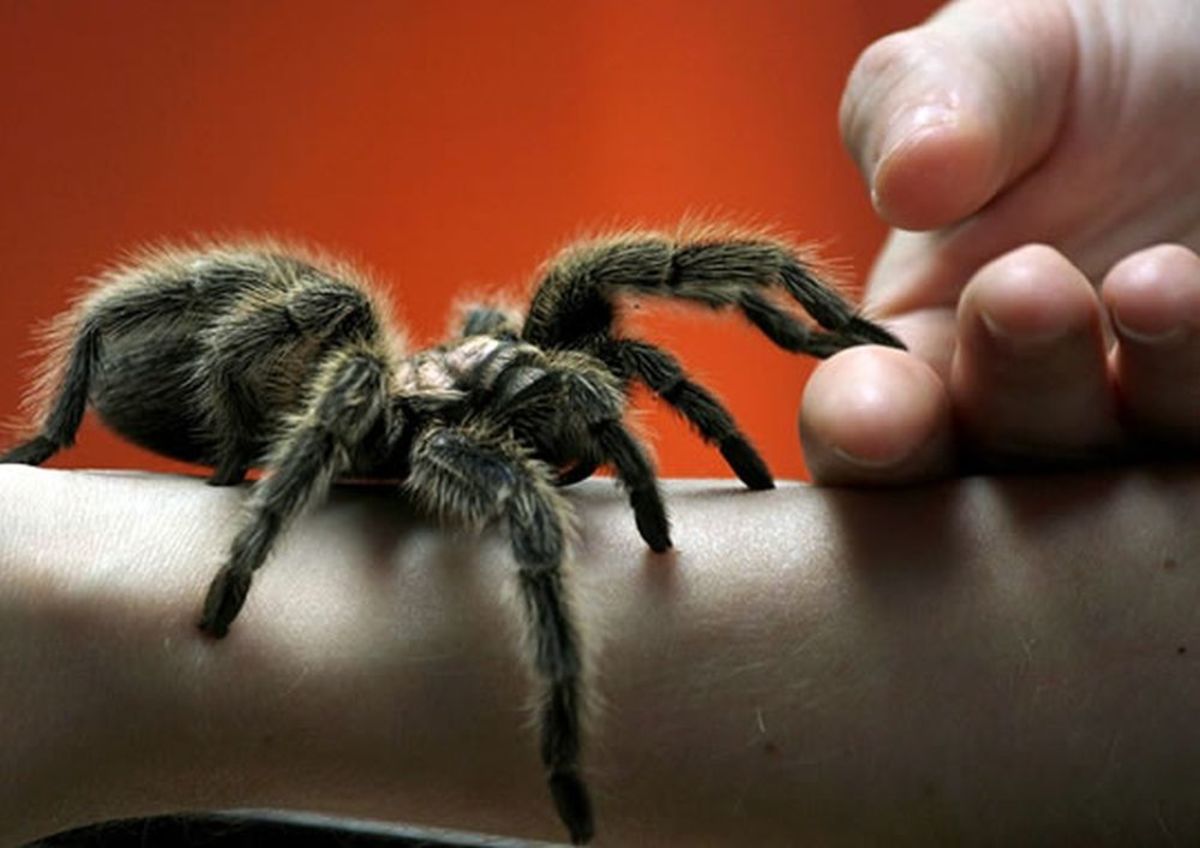Salmon Pink Birdeater - Lasiodora Parahybana Complete Care Guide
The Brazilian Salmon Pink Birdeater is one of the most popular spiders in the world. Over a dozen years ago, the spider could be encountered mostly in nature, roaming free, but nowadays, it often appears in houses as a pet. An adult Lasiodora Parahybana looks really impressive, and it's not as dangerous as some think. But keeping a pink tarantula at home requires sticking to certain rules, and having knowledge about terrariums.

What does the salmon pink birdeater look like?
The Brazilian salmon pink birdeater is one of the largest terrestrial spiders. When checking its length, the leg spread is taken into account. Some spiders of this species can have even 28 centimeters. As for the size, Lasiodoa Parahybana takes second place - only the Goliath birdeater is larger, by 2 centimeters.
The spider has a distinct-looking body. The hair covering the abdomen makes it seem fluffy. It’s worth knowing that the hair works as one of the spider’s senses, helping it sense other creatures nearby. Other hairs covering the tarantula are used in defense - the spider throws them in the direction of the aggressor.

What are other types of tarantulas apart from Lasiodora Parahybana?
The name tarantula collects over 900 spider species. The characteristic body shape is their common feature. Tarantulas can be found on nearly every continent, but keep in mind that certain species are distinct for particular regions.
Here are the most popular species of this type of spider:
- the Goliath birdeater,
- the Brazilian salmon pink birdeater,
- the Brazilian white-knee tarantula,
- the orange baboon tarantula,
- the Costa Rican tiger rump,
- the curly haired tarantula,
- the Mexican red-knee tarantula,
- the Togo starburst tarantula.
How to feed the salmon pink birdeater?
Lasiodora parahybana eats various foods, depending on its development stage. Young spiders can eat fly larvae, small crickets or young cockroaches given to them using small tweezers.
Adult pink tarantulas have a reputation of relentless hunger. They will eat practically anything thrown into the terrarium - a large spider won’t have a problem even with Madagascar hissing cockroaches.
Lasiodora parahybana - what terrarium size to pick?
The salmon pink birdeater is easy to care. Remember that because the spider is large, it needs a spacious terrarium, where it can feel good and develop without issues.
A young, small spider feels great in a small container. Spider-keepers often use small plastic containers, e.g. plastic condiment cups with lids. It’s a perfect enclosure for a young spider. When putting a tarantula in a container, remember about ventilation. You can pierce sides of the container or the lid, but make sure the holes aren’t too big. Otherwise, the spider could get out and run away.
Adult salmon pink birdeaters can be placed in a terrarium. The standard size is 40x30x30 cm. Of course, the terrarium can be larger, but it should serve the most important function - the mentioned ventilation. It should be gravitational if the terrarium is made of glass. Otherwise, the substrate in the terrarium might rot, which is not good for the spider.
The Brazilian salmon pink birdeater should be kept in a terrarium with a guillotine opening - which opens upwards. It’s not unheard of that a spider managed to open a sliding door and get out of its cage.

Who should get a Brazilian salmon pink eater?
Keeping a Lasiodora parahybana typically doesn’t require a special permission. It means anyone can breed and sell them without any control. You should check the local laws and make sure if you don’t need a license to keep a spider. Regardless, if you decide to take such an animal, make sure to provide the best conditions to it, and most importantly, not be afraid of the spider.
Beginner spider keepers often ask whether the salmon pink birdeater is venomous. As every spider, yes, but only 20 tarantula species are dangerous to humans. Lasiodora parahybana is harmless.
A spider bite, especially a large one, can be unpleasant. Its venom may cause swelling, which disappears after some time.

📍 Where does the salmon pink birdeater live?
The salmon pink birdeater, also known as Lasiodora parahybana is a popular tarantula species. In nature, the spider can be found only in Paraíba in Brazil. In other places in the world it's kept in terrariums.
📍 How much does the LP tarantula cost?
The price of Lasiodora parahybana mostly depends on its development stage. The smallest spiders are the cheapest, and they can be purchased for about $30. Large spiders from reputable breeders cost much more.
📍 How to tell the gender of a pink tarantula?
To tell if a tarantula is male or female, flip the spider gently on its back. Examine the line across the abdomen. If there is a semicircular area above, the spider is male.
Featured articles
Maybe you're interested




